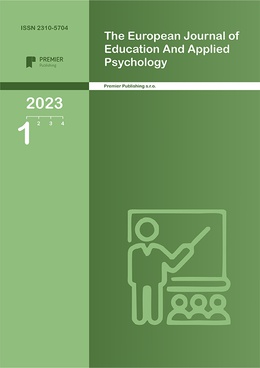CRITERIA FOR TEACHING INTEGRAL STEM TOPICS (iSTEM) IN VIETNAM HIGH SCHOOL
Authors
Pham Thi Phu, Le Thinh

Share
Annotation
STEM education is a suitable model for innovating Vietnam's education, focusing on developing students' abilities and qualities. STEM-integrated teaching is essential in high schools to develop students' thinking and creativity, communication and cooperation abilities to meet the needs of the country's development. Building an integrated STEM topic (referred to as iSTEM topic) for single-subject teaching is an issue that many teachers are interested in, especially in the 2018 General Education Program. What criteria to build a topic integrating STEM in single-subject teaching of current general education curricula? This is the research question in this paper. Based on the survey, analysis and evaluation of the existing iSTEM topic criteria, we propose a set of criteria for implementing iSTEM topic design in teaching Physics at high schools in Vietnam.
Keywords
Authors
Pham Thi Phu, Le Thinh

Share
References:
[1] Ministry of Education and Training, (2018), General Education Program 2018 (Master Program).
[2] Ministry of Education and Training, (2020), Official Letter No. 3089/BGDĐT-GDTrH Implementing STEM education in secondary education.
[3] Ministry of Education and Training, (2019), Training of administrators and teachers on building STEM topics in secondary education, Training documents, Secondary Education Development Program phase 2.
[4] Nguyen Thanh Nga, Phung Viet Hai, Nguyen Quang Linh, Hoang Phuoc Muoi, (2018), Designing and organizing teaching STEM topics for junior and high school students, Ho Chi Minh City Pedagogical University Publishing.
[5] Le Xuan Quang, (2017), Teaching Technology in junior high schools with the orientation of STEM education, Doctoral thesis in educational science, Hanoi National University of Education.
[6] Moore T. J., Stohlman M.S., Wang H. H., Tank K. M., & Roehrig G. H. (2014), Implementation and Intergration of Engineering in K-12 STEM education. In J.Strobel, S. Pruzer & M. Cardela (Eds), Engineering in pre-college setting: Research into practice. Rotterdam: Sense Publishers.
[7] Guzey S. S., Moore T. J. & Harwell M. (2016), Building Up STEM: An Analysis of Teacher – Developed Engineering Design – Based STEM Intergration Curricular Matetials, Journal of Pre-College Engineering Education Research (J-PEER), Vol 6 (2016), https://docs.lib.purdue.edu/jpeer/vol6/iss1/2, page 11-15.
[8] De Meester, J., De Cock, M., Langie, G. and Dehaene, W. (2021), The Process of Designing Integrated STEM Learning Materials: Case Study towards an Evidence-based Model, European Journal of STEM Education, 6(1), 10. https://doi.org/10.20897/ejsteme/11341 Published: November 11, 2021.


